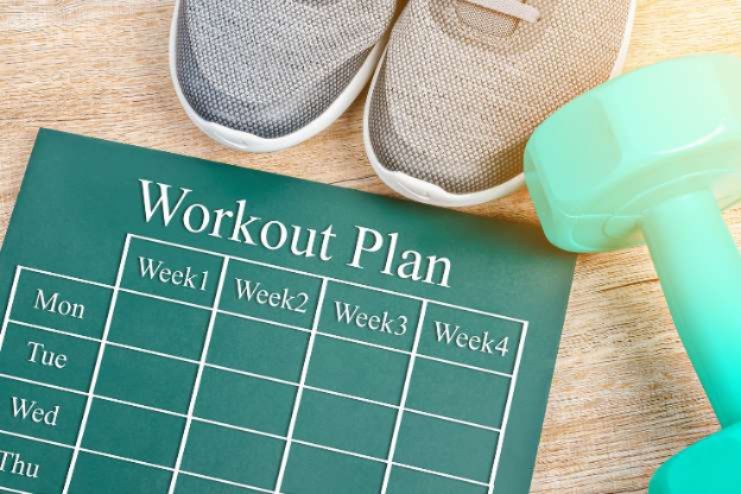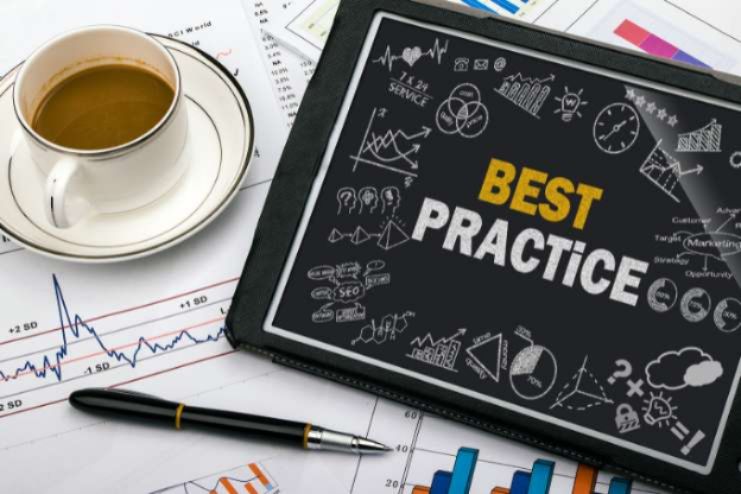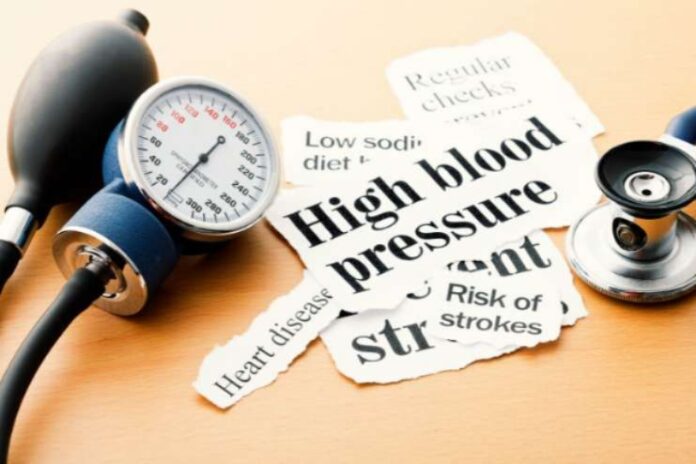Affiliate Disclaimer
Some links in this article are affiliate links. We may earn a small commission if you make a purchase through these links, at no extra cost to you. We only recommend products we find useful to our readersMaintaining health and wellness requires controlling hypertension, also known as high blood pressure, and maintaining a healthy blood pressure range through regular physical activity.
In addition to lowering stress, exercise strengthens the heart, increases circulation, and encourages appropriate weight management—all of which help lower blood pressure.
This article will examine efficient exercise programs created especially for people with hypertension. Emphasizing safe, sound, and blood pressure-lowering workouts, these programs can help you actively participate in exercises that naturally regulate your blood pressure.
Read More: The Link Between Hypertension and Kidney Health: What You Need to Know
Understanding Hypertension and Exercise Benefits

Hypertension, generally known as high blood pressure, arises when the force of the blood on the walls of your arteries is consistently too high. As we age, our risk of developing hypertension increases.
People with hypertension who regularly engage in aerobic activity see a 5-7 mm Hg drop in blood pressure, which translates into a 20-30% lower risk of heart disease. Additionally, exercise can help you reduce stress, strengthen your heart, and control your weight. A healthy weight, a robust heart, and overall mental well-being benefit blood pressure.
You don’t have to join a gym or run a marathon immediately. Instead, begin slowly and increase the amount of physical activity you do each day.
There are numerous other advantages of exercise. Exercise enhances balance and fortifies bones. It keeps your joints and muscles moving, which might help you stay independent and active as you age. It can boost mood, increase energy levels, and even enhance cognitive abilities.
Exercise will raise your blood pressure for a brief while. Most people don’t have to worry about this, and things should quickly get back to normal after you quit the activity.
If your blood pressure is extremely high, your physician or nurse may advise lowering it with medication before you begin exercising. Avoid starting new activities if your blood pressure is high enough without consulting your doctor.
Read More: Preventing Hypertension in Children: Lifestyle and Diet Tips
Effective Workouts to Control Blood Pressure

Incorporating different varieties of exercise into your routine can be helpful in treating hypertension. Every exercise has unique benefits for lowering blood pressure, strengthening the heart, and boosting general well-being. We’ll look at some essential workouts that are particularly beneficial for people with hypertension below:
Aerobic Activities:
Aerobic exercise strengthens the cardiovascular system and is a fantastic method for improving fitness and controlling blood pressure. The U.S. Department of Health and Human Services outlines the amount of aerobic exercise adults should do each week.
Adults should aim to get 150 minutes of moderate-intensity aerobic exercise or 75 minutes of vigorous physical activity. This amounts to 30 minutes of moderate aerobic exercise five days a week. You can also engage in intense aerobics for 25 minutes three days a week. Combinations will also be effective. Beginners should start slowly. Begin with aerobics at a lesser intensity and work your way up.
To reduce blood pressure, include the following aerobic exercises in your routine:
● Walking: One of the simplest and safest strategies to lower blood pressure is to take a brisk 30-minute walk most days of the week.
● Cycling: Cycling provides excellent cardiovascular exercise and can be done outside or indoors on a stationary bike.
● Swimming: This low-impact activity works the whole body and is especially good for people with joint issues.
● Dancing: Dancing is a fun and efficient approach to increase your heart rate and improve circulation.
Isometric Workouts:
Studies have demonstrated that strength training lowers blood pressure in individuals with prehypertension and hypertension. According to studies, isometric exercises, also known as static strength training, may be the most effective way to reduce blood pressure.
When you perform an isometric exercise, such as a glute bridge or triceps dip hold, you can contract your muscles without moving your joints. Your muscles support your body weight against gravity while you maintain a position.
The following are the top isometric exercises to incorporate into your strength-training regimen:
● Wall sits: This exercise works the quadriceps and glutes. By practicing it, you may learn the correct form for squats.
● Planks: A plank is a full-body workout that helps build core strength. To develop strength and establish good form, beginners can begin with a forearm plank.
● Bodyweight workouts: You can do simple exercises like push-ups, lunges, and squats without special equipment.
● Stress ball squeeze: Weaker grips have been associated with a higher risk of heart disease, heart stroke, and mortality. This exercise, which seems easy, is a terrific method to strengthen your grip. A tennis ball or foam stress ball would be enough.
Flexibility Routines:
Flexibility exercises can help manage hypertension by encouraging relaxation and lowering stress. High blood pressure is largely caused by chronic stress, and flexibility exercises soothe the nervous system.
Some examples of exercises for flexibility are:
● Yoga: Besides increasing flexibility, yoga poses like the downward dog and child’s pose encourage deep breathing, which helps reduce stress.
● Pilates: Pilates enhances core strength, flexibility, and posture—all linked to improved heart health.
Read More: 6 Foods to Avoid for Better Hypertension Management
Creating a Personalized Exercise Plan

Hypertension is a major global health concern as it is the primary risk factor for heart disease, stroke, and kidney disease. Nearly one in three persons in the United States are thought to have hypertension, and roughly half have prehypertension.
Creating a customized exercise program for managing hypertension is crucial to optimizing the health benefits of physical activity while maintaining sustainability and safety. In collaboration with your healthcare team, create a physical activity program that suits your requirements and capabilities. They will advise you on which activities to avoid and which symptoms and indicators to monitor.
Determine Your Existing Fitness Level: If you’re new to exercising, start with low-impact exercises like walking or mild cycling. If you’ve been active, you may mix moderate aerobic workouts with strength training and flexibility exercises. Speaking with your doctor before starting a new fitness regimen is crucial, particularly if you already have health issues.
Set Realistic Goals: Your objectives should be realistic. For example, try to do strength training twice a week or walk briskly for 30 minutes five days a week. By setting specific targets, you can monitor your progress and maintain motivation.
Warm-up and cool down: Take a five- to ten-minute, leisurely walk before beginning and after finishing any fitness program. By warming up and cooling down, your heart rate and breathing can gradually rise at the beginning of your workout and fall at the end. Stretching can also help increase flexibility after a workout.
Make Consistency a Priority: Consistency is essential when using exercise to manage hypertension. Include regular exercise in your regimen; try to get in at least 150 minutes of moderate aerobic activity for each week, in addition to strength training twice a week. Your general fitness, well-being, and blood pressure will improve with time.
Read More: Understanding the DASH Diet: A Tool for Managing Hypertension
Best Practices and Precautions

It takes mindfulness and careful preparation to exercise safely while having hypertension to ensure that it lowers blood pressure. The following are some recommended practices:
Keep an eye on your intensity: Your medical team will advise you on the ideal level of physical activity, which will likely fall somewhere between moderate and intense. The general rule is to exert enough effort to increase breathing while maintaining conversational ability.
Stay Hydrated: Drink a lot of water before, during, and after your workouts to stay hydrated. Dehydration can cause blood pressure to rise.
Speak with Medical Professionals: Before starting any fitness regimen, speak with your physician, particularly if you already have any health issues. They can help you perform the right exercises and track your development. Consult a healthcare professional to adjust your workout regimen if you have a particular health issue, such as diabetes or heart disease.
Precautions: To prevent strain, beginners or people with poor fitness levels should start slowly and gradually increase their intensity. Never ignore your body’s signals; if you feel lightheaded, have chest pain, or have trouble breathing, stop exercising immediately.
Read More: 6 Lifestyle Changes to Reduce Your Risk of Hypertension
Conclusion
Exercise is a potent weapon in the fight against hypertension because it provides a sustainable, natural means of controlling blood pressure and improving heart function. Regular physical exercise, such as strength training, stretching, or brisk walks, empowers your body to maintain blood flow and lessen cardiac strain.
Keep in mind that persistence is more important than perfection. Small, regular actions can significantly improve your health. Wear sneakers, enjoy being active, and welcome the energy of leading an active lifestyle. Your blood pressure and heart will both appreciate it.
References
- https://www.mayoclinic.org/diseases-conditions/high-blood-pressure/in-depth/high-blood-pressure/art-20045206
- https://www.heart.org/en/health-topics/high-blood-pressure/changes-you-can-make-to-manage-high-blood-pressure/getting-active-to-control-high-blood-pressure
- https://www.bloodpressureuk.org/your-blood-pressure/how-to-lower-your-blood-pressure/healthy-living/exercise-physical-activity/
- https://www.health.harvard.edu/diseases-and-conditions/how-does-exercise-affect-blood-pressure
- https://essentrics.com/how-exercise-affects-blood-pressure/?gad_source=1
- https://www.columbiadoctors.org/news/best-exercise-lower-your-blood-pressure-its-not-what-you-think-it
- https://odphp.health.gov/sites/default/files/2019-10/PAG_ExecutiveSummary.pdf
- https://bjsm.bmj.com/content/57/20/1317
- https://www.honorhealth.com/healthy-living/6-best-exercises-control-high-blood-pressure
- https://www.goodrx.com/well-being/movement-exercise/exercises-to-lower-blood-pressure
- https://www.physio-pedia.com/A_10-Week_Physical_Activity_Program_for_a_Hypertensive_Obese_Adult
- https://www.nestacertified.com/creating-training-programs-for-clients-with-hypertension/
- https://www.heart.org/en/health-topics/cardiac-rehab/getting-physically-active/develop-a-physical-activity-plan-for-you
In this Article

















